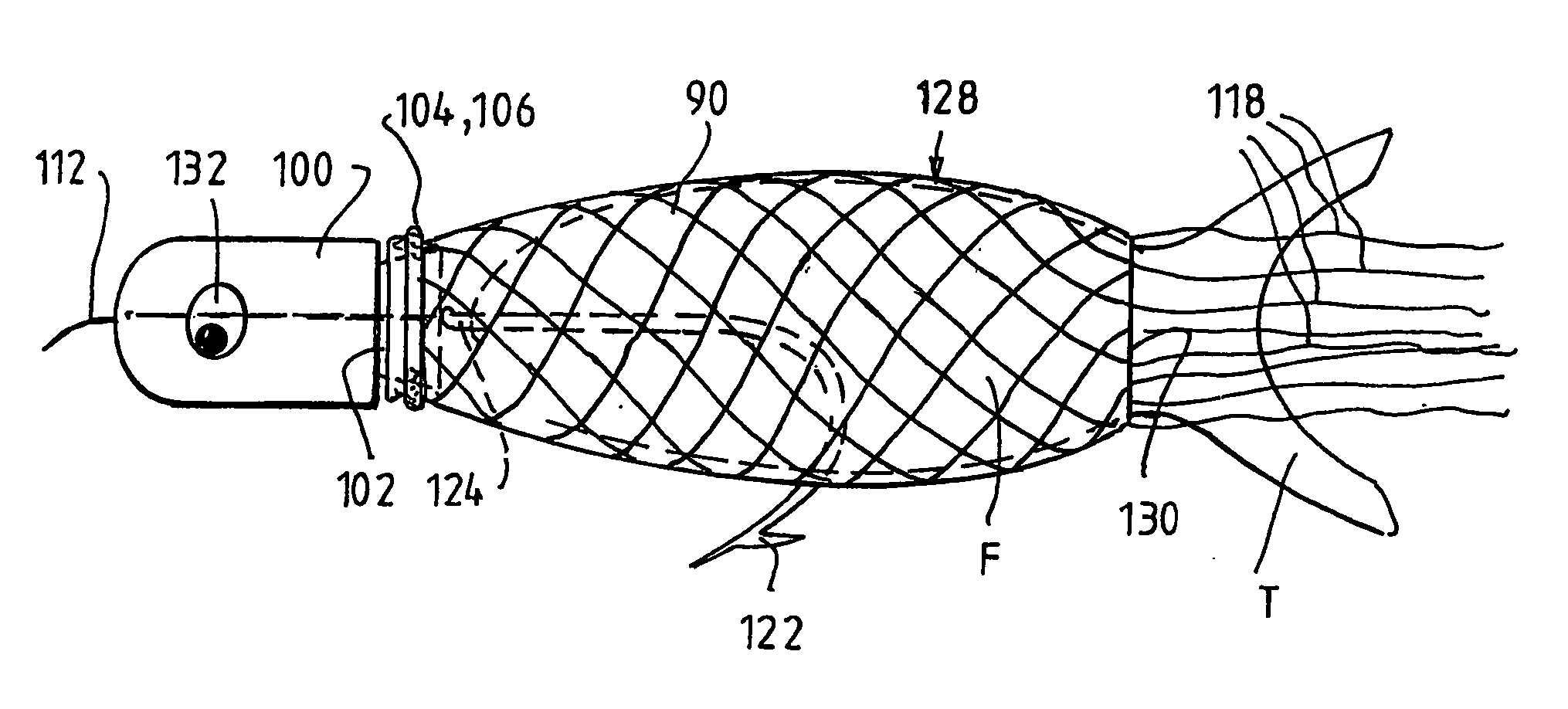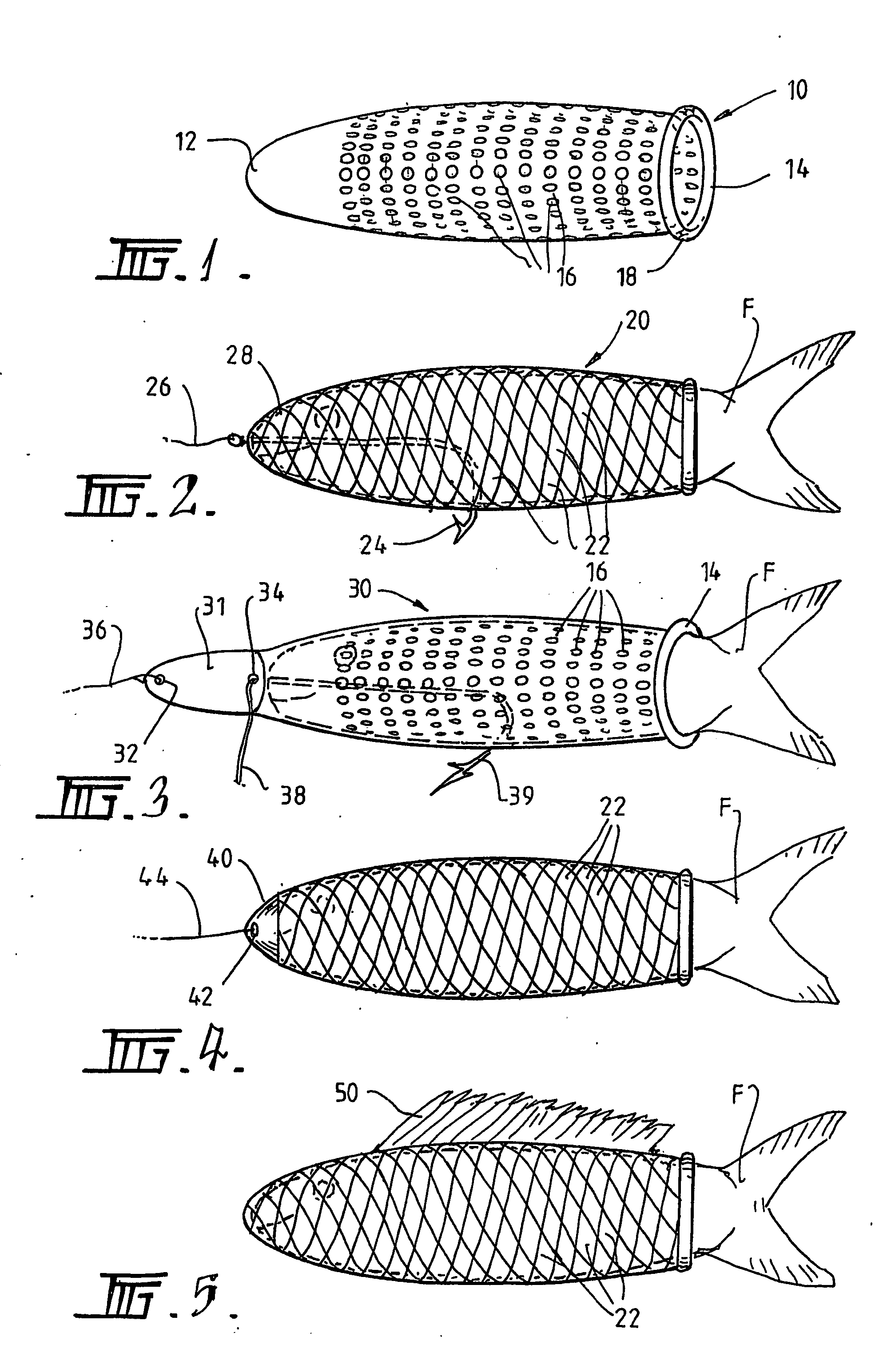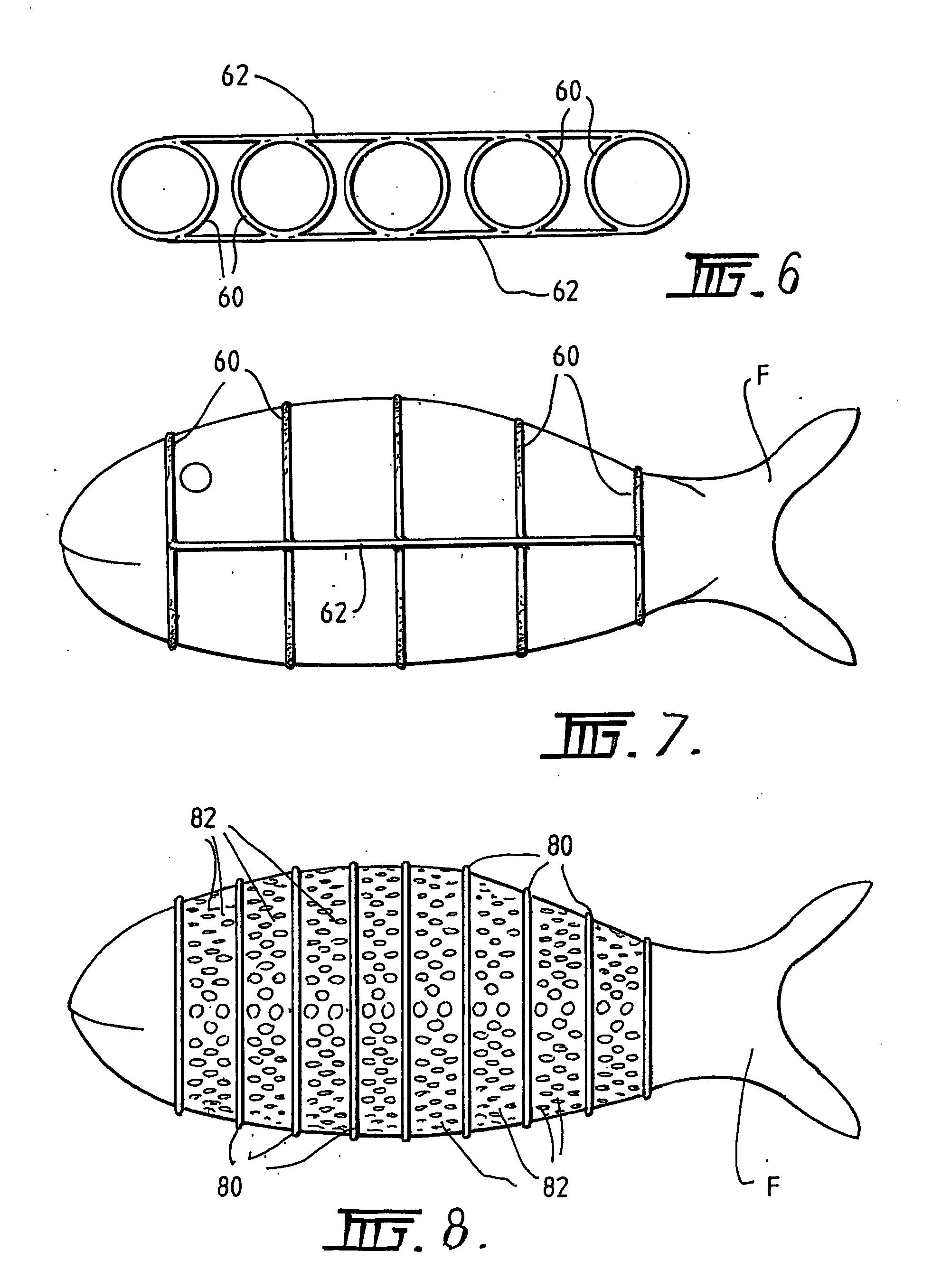Lure and bait system
a technology of lure and bait, which is applied in the field of lure and bait holding system, can solve the problems of lure wear and bait disintegration, attractant wear and tear, and can be a problem, and achieve the effect of rapid and easy reinforcemen
- Summary
- Abstract
- Description
- Claims
- Application Information
AI Technical Summary
Benefits of technology
Problems solved by technology
Method used
Image
Examples
Embodiment Construction
[0033] Referring firstly to FIG. 1, a lure and / or bait holding apparatus is shown in the form of an elongate sock sleeve 10. The sock sleeve has a closed end 12 and an opposite open end 14. A plurality of apertures in the form of holes 16 are defined in the sock sleeve as shown.
[0034] The open end is typically reinforced by a circumferential back-fold or roll 18 of the sleeve 10. This allows for repeated insertion and removal of bait and lures to and from the sleeve (eg. using an applicator as shown in FIGS. 17 and 18), without the sleeve deteriorating at that end (eg. by tearing). The closed end may also be reinforced, for example, by being of increased thickness (as specified during moulding) to prevent the bait or lure from being pushed out at that end during insertion, and optionally to allow for line and hook attachment etc.
[0035] Typically the sock sleeve is formed from an elastomeric material having shape memory, such as an elastomeric polymer (eg. a natural or synthetic ru...
PUM
 Login to View More
Login to View More Abstract
Description
Claims
Application Information
 Login to View More
Login to View More - R&D
- Intellectual Property
- Life Sciences
- Materials
- Tech Scout
- Unparalleled Data Quality
- Higher Quality Content
- 60% Fewer Hallucinations
Browse by: Latest US Patents, China's latest patents, Technical Efficacy Thesaurus, Application Domain, Technology Topic, Popular Technical Reports.
© 2025 PatSnap. All rights reserved.Legal|Privacy policy|Modern Slavery Act Transparency Statement|Sitemap|About US| Contact US: help@patsnap.com



